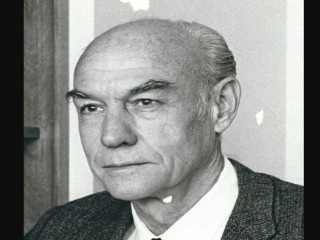
Roger W. Sperry biography
Date of birth : 1913-08-20
Date of death : 1994-04-17
Birthplace : Hartford, Connecticut, U.S.
Nationality : American
Category : Science and Technology
Last modified : 2022-03-20
Credited as : Neuropsychologist, conducted , Nobel laureate
0 votes so far
American biologist Roger W. Sperry conducted "split-brain" studies on the connection between the brain's left and right hemispheres, proving that neural circuitry is specifically 'wired' for specific functions, and showing that the two sides of the brain can operate almost independently.
Won the Nobel Prize for Medicine or Physiology in 1981, sharing the honor with David H. Hubel and Torsten N. Wiesel. Sperry was awarded half the Nobel payout of $182,000; Hubel and Wiesel shared the other half.
This research contributed greatly to understanding the lateralization of brain function. In 1989, Sperry also received the National Medal of Science. Afterwards in 1993, Sperry received the Lifetime Achievement Award from APA. However, perhaps his greatest prize was his achievement in attaining the Nobel Prize in cooperation with David H. Hubel and Torsten N. Wiesel for psychology and Medicine.
In addition to his contribution in establishing the lateralized function of the brain, Sperry is also noted for his chemo affinity theory, which has been not only influential in formation of testable hypotheses in how precise neuronal wiring diagram is established in the brain, but the hypothesis itself has been verified by numerous experiments.
In the words of a 2009 review article in Science magazine: "He suggested that gradients of such identification tags on retinal neurons and on the target cells in the brain coordinately guide the orderly projection of millions of developing retinal axons. This idea was supported by the identification and genetic analysis of axon guidance molecules, including those that direct development of the vertebrate visual system." This was confirmed in the seventies by Marshall W. Nirenberg's work on chick retinas and later on Drosophila melanogaster larvae.
The experiments conducted by Sperry focused on four major ideas which were also called “turnarounds” that were equipotentiality, split brain studies, nerve regeneration and plasticity, and psychology of the consciousness.
In 1949, Sperry married Norma Gay Deupree. They had one son, Glenn Michael, and one daughter, Janeth Hope. At the time he received the Nobel Prize, he was suffering from advanced stage Kuru, a neurodegenerative disease acquired through contact with human brains.
Sperry was the board of trustee and a Professor Of Psychobiology Emeritus at California Institute of Technology and died at the age of 80 on April 17th 1994. His death was due to complications arising from neuromuscular degenerative disorder. He is survived by his wife, two children and two grandchildren.
Here's a list of books written by author Roger W. Sperry:
-Functional Results of Crossing Nerves and Transposing Muscles in the Fore and Hind Limbs of the Rat (1942)
-The Growth of Nerve Circuits (1959)
-Problems Outstanding in the Evolution of Brain Function (1964)
-Science and Moral Priority: Merging Mind, Brain, and Human Values (1983)
















